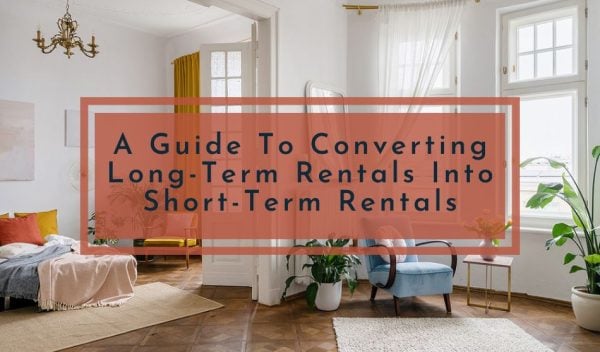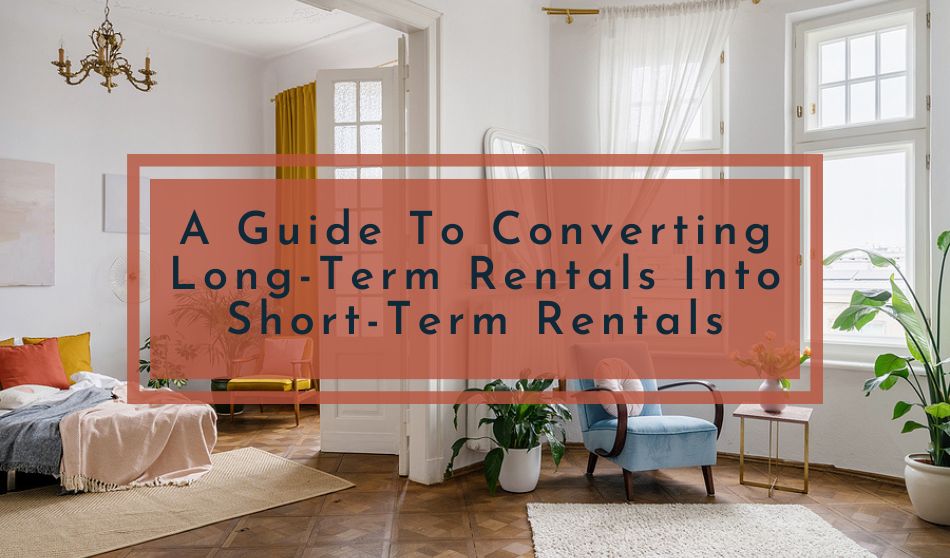
Converting a long-term rental to a short-term rental can be a lucrative venture for landlords or property owners. With the rise of vacation rental platforms like Airbnb and Vrbo, there’s a growing demand for short-term rentals, especially in popular tourist destinations. In this blog, we’ll explore the steps involved in converting a long-term rental to a short-term rental and the factors that should be considered before making the switch.
Step 1: Check Local Regulations
When converting a long-term rental to a short-term rental, it’s important to research local laws and regulations. Some cities and municipalities have specific rules and others may require a permit or license, limit the number of days a property can be rented, or require certain safety features like smoke detectors and fire extinguishers. By familiarizing yourself with the relevant regulations, you can avoid legal trouble that can arise from failure to comply with them, resulting in major fines and penalties.
Step 2: Evaluate the Property
To ensure that your property will be a good fit as a short-term rental, start by determining whether or not it’s in an ideal location. Tourist destinations in particular, are in high demand and more popular. Because they are close to attractions, public transportation, and usually a handful of restaurants, renters find them to be more desirable.
It’s also wise to take your property’s amenities into consideration. Prospective tenants are always on the lookout for rentals that have extra comfort including pools or other outdoor spaces. Before making the change from a long-term rental to a short-term rental, be sure that the rental is equipped with everything a renter would expect or need.
Step 3: Calculate Potential Revenue
Even though short-term rentals can be more profitable than long-term rentals, they often come with additional expenses like cleaning and maintenance. But, that also means you can charge more per night.
To make sure the transition from a short-term rental to a long-term rental is right for you, determine if it makes financial sense. Before you calculate potential revenue, find out what other properties in the area are charging for rent. Then, calculate the total revenue for the year by multiplying the rental rate by the number of nights the property is expected to be rented. Subtract the expenses, including cleaning fees, maintenance costs, and any other expenses associated with the property. This will give you a rough estimate of the potential revenue.
Step 4: Set up the Property
Once you’ve decided to convert your long-term rental to a short-term rental, it’s time to prepare for guests. Make sure your rental is clean, furnished, and everything is working. Doing so will create a welcoming and comfortable environment for your renters.
In addition, stock the kitchen with supplies and ensure bathrooms are complete with all necessary toiletries. To make things more convenient for both you and guests, consider setting up keyless entry, and creating a guestbook with instructions for the property and local recommendations.
The guestbook can include information about:
- How to use appliances
- Wifi network name and password
- Where to find linens
- Recommended restaurants
- Local attractions and shops
Step 5: Market the Property
Once the property is set up and ready for renters, you’ll want to pick a platform to list it. The most popular ones are Airbnb, Vrbo, Booking.com, and FlipKey. When marketing your property, your listing should highlight the property’s features and amenities.
High-quality photos and a detailed description of the property, along with its location, are all factors that will help make your listing more attractive. Be sure to set a competitive rental rate based on market research and adjust it as necessary. To increase visibility for the property, ask previous renters to leave reviews on the rental platform.
Step 6: Opt Into An Insurance Plan
To safeguard yourself as well as your property, be sure to sign up for liability insurance. A good plan will protect your legal liability. Some plans, like Airbnb’s Host Protection Insurance offer $1,000,000 and also include coverage for any injuries and damages to the rental.
Step 7: Manage the Property
Managing a short-term rental can be a time-consuming task, but is critical for ensuring a successful rental experience for property owners and renters alike. If tasks like coordinating check-ins and check-outs, handling rental payments, and responding to renter inquiries and concerns seem too overwhelming, consider hiring a property management company that specializes in short-term rentals.
Property management companies can handle the aforementioned tasks and much more, including:
- Advertising the rental
- Managing bookings
- Coordinating check-ins and check-outs
- Handling maintenance and repairs
Factors to Consider Before Converting to a Short-Term Rental
While short-term rentals have become increasingly popular in recent years, there are also drawbacks to consider. Here are some of the main downsides.
Legal Issues
One of the biggest challenges with short-term rentals is navigating the legal landscape. Laws and regulations surrounding short-term rentals vary widely by location, making it difficult for property owners to stay up-to-date on the latest requirements.
Increased Wear and Tear on the Property
With guests coming and going frequently, short-term rentals typically see more turnover than long-term rentals. As a result, property owners may need to invest in more frequent repairs and upgrades to keep the property in good condition.
Unpredictable Income
It’s very common for rentals to fluctuate based on seasonal demand and other factors. Property owners may experience periods of high demand followed by slower periods with lower occupancy rates, which can make it difficult to predict and plan for income.
Higher Overhead Costs
Short-term rentals typically come with higher overhead costs than long-term rentals. These costs may include expenses like utilities, cleaning fees, and taxes. Subsequently, you may need to charge higher rental rates to cover these expenses, which can make the rental less competitive in the market.
Potential for Negative Guest Experiences
If your goal is to drive repeat business, you’ll need to make sure your guests have a positive experience. Hosts that work hard to meet renter needs, are more likely to get better reviews. However, there is always a chance that something may go wrong or that property can get damaged. Unfortunately, these negative experiences can harm the property’s reputation and make it more difficult to attract future guests.
Lack of Stability
Since guests may only book for a few days or weeks at a time, short-term rentals can make it difficult to determine future occupancy and income. It can also be challenging for property owners who prefer long-term tenants to build stable relationships with their guests.
Learn more: How to Turn a Short-Term Rental Into a Long-Term Rental
Preparing To Make The Switch
With careful planning and management, a short-term rental can become very profitable for property owners. By carefully following the steps outlined above, and taking the other factors into consideration, landlords can make an informed decision about whether converting to a short-term rental is the right choice for them.






